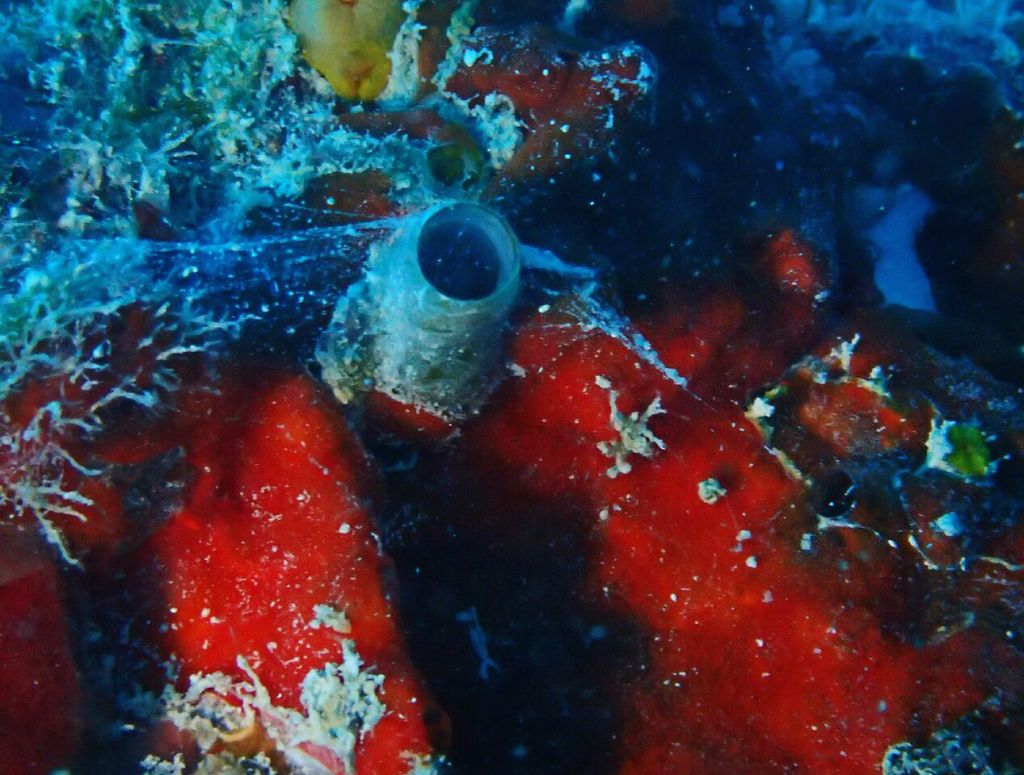Insulin injections save countless lives, but killer snails are privy to a secret we thought only humans knew: They can also end them.
The common cone snail may look like a pretty, pocket-sized trinket, but most of these fish-hunters produce an arsenal of over 200 life-ending venoms. And it’s not just fish that are susceptible—the snails have killed dozens of people in accidental encounters.
Videos by VICE
Now, nature’s most nefarious snail has shown us that insulin, the heretofore benign protein of energy metabolism, can also be co-opted for predation. In new research published in the Proceedings of the National Academy of Sciences, scientists found that certain species of Conus—the same critters that give us an opioid-like neurotoxin 100 times as potent as morphine—shoot weaponized insulin at fish. While some diabetic humans will administer small insulin injections to lower their blood sugar levels, these venomous beasts have a more violent goal in mind: Causing entire schools of fish to suffer a massive blood-sugar crash.
“This is a beautiful example of evolutionary cleverness,” lead study author Helena Safavi-Hemami, a research assistant professor at the University of Utah, told me in an email.
As predators go, cone snails, which spend their lives slinking about coral reefs and shallow tropical sea floors, don’t look particularly threatening. But what the innocuous mollusks lack in size and speed they make up for in literally hundreds of venoms, which each species uses to concoct its own signature death brew. In the present study, researchers were interested in a particular species, Conus geographus, which, using its stretchy, mouth-like part as a gun barrel, sprays forth a venomous mixture that immobilizes fish. The snail’s false-mouth then advances and becomes nightmarishly distended before engulfing its paralyzed victims.
Amazing video of a cone snail sucking up a fish, post-venom blast
Seeking to understand how the snail stuns entire groups of fish at once, the researchers scoured the gene sequences of proteins expressed in the snail’s venom gland. Two sequences bore striking similarity to the hormone insulin, which is produced by humans and other vertebrates to regulate energy metabolism. Chemical analysis confirmed that insulin was present in abundance in the snail’s venom glands, in a form that almost perfectly matched the type manufactured by its fish prey—evolutionary cleverness indeed. The findings convinced the researchers that Conus geographus uses insulin as a weapon.
The landscape of venomous warfare is complex and variegated. Included among the venoms produced by snakes, for instance, are cytotoxins that rupture cells, cardiotoxins that’ll stop your heart, hemotoxins that cause your blood to clump and solidify, and neurotoxins that produce pain beyond comprehension or complete paralysis. The discovery of weaponized insulin, which targets energy metabolism, extends our knowledge of nature’s toxic creativity.
While cone snails continue to slay scores of hapless fish, scientists are hard at work decoding the mollusks’ chemical armories in the hopes of discovering promising new drugs. Snail toxins have many different targets in the nervous system, which may be used to treat conditions from chronic pain to epilepsy. In addition to the painkiller ziconotide (brand name Prialt), Safavi-Hamani tells me there are nearly a dozen “conotoxins” in the drug development pipeline. And there could be thousands more waiting to be discovered.
“Each of the five hundred cone snail species makes a uniques set of at least two hundred venom toxins, leading to as many as a hundred thousand potential drug leads,” Safavi-Hamani said.
Hey, who ever said we can’t capitalize off nature’s cruelty?
Conus geographus, the beautiful, deadly mollusk that weaponized insulin. Image: Wikimedia
